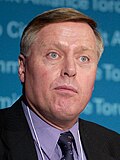
A | B | C | D | E | F | G | H | CH | I | J | K | L | M | N | O | P | Q | R | S | T | U | V | W | X | Y | Z | 0 | 1 | 2 | 3 | 4 | 5 | 6 | 7 | 8 | 9
| |||||||||||||||||||||||||||||||||||||||||||||||||||||||||||||||||||||||||||||||||||
107 seats in the 39th Legislative Assembly of Ontario 54 seats were needed for a majority | |||||||||||||||||||||||||||||||||||||||||||||||||||||||||||||||||||||||||||||||||||
|---|---|---|---|---|---|---|---|---|---|---|---|---|---|---|---|---|---|---|---|---|---|---|---|---|---|---|---|---|---|---|---|---|---|---|---|---|---|---|---|---|---|---|---|---|---|---|---|---|---|---|---|---|---|---|---|---|---|---|---|---|---|---|---|---|---|---|---|---|---|---|---|---|---|---|---|---|---|---|---|---|---|---|---|
| Turnout | 52.8% | ||||||||||||||||||||||||||||||||||||||||||||||||||||||||||||||||||||||||||||||||||
| |||||||||||||||||||||||||||||||||||||||||||||||||||||||||||||||||||||||||||||||||||
 Popular vote by riding. As this is an FPTP election, seat totals are not determined by popular vote, but instead via results by each riding. Riding names are listed at the bottom. | |||||||||||||||||||||||||||||||||||||||||||||||||||||||||||||||||||||||||||||||||||
| |||||||||||||||||||||||||||||||||||||||||||||||||||||||||||||||||||||||||||||||||||
The 2007 Ontario general election was held on October 10, 2007, to elect members (MPPs) of the 39th Legislative Assembly of the Province of Ontario, Canada. The Liberals under Premier Dalton McGuinty won the election with a majority government, winning 71 out of a possible 107 seats with 42.2% of the popular vote. The election saw the third-lowest voter turnout in Ontario provincial elections, setting a then record for the lowest voter turnout with 52.8% of people who were eligible voted. This broke the previous record of 54.7% in the 1923 election,[1] but would end up being surpassed in the 2011 and 2022 elections.
As a result of legislation passed by the Legislature in 2004, election dates are now fixed by formula so that an election is held approximately four years after the previous election, unless the government is defeated by a vote of "no confidence" in the Legislature. Previously, the governing party had considerable flexibility to determine the date of an election anywhere up to five years of being elected. The date of this election was originally presumed to be October 4, 2007;[2] however, the law fixes the date on the first Thursday of October or on any day within seven days thereof if required to accommodate a date of "religious or cultural significance". The date was set as October 10, 2007, to avoid a conflict with the Jewish holiday of Shemini Atzeret, which fell on October 4, 2007.[2]
In the same election, there was a provincial referendum on whether to change from first-past-the-post to mixed member proportional representation, as recommended by the Ontario Citizens' Assembly on Electoral Reform. This measure failed, with 37% of the participating electorate and 5 out of 107 ridings voting for the new system; a 60% supermajority was required province-wide, with at least 2/3 of the ridings also supporting it by a simple majority.[3]
Issues
Although all four parties released a variety of detailed platform proposals, the campaign was dominated almost entirely by John Tory's promise to extend public funding to Ontario's faith-based schools.[4]
In Ontario at present, the Catholic school system is fully funded in the same manner as public schools. However, other religious schools, such as Jewish, Muslim or Evangelical Christian schools, are not funded by the province. This discrepancy has been cited as discriminatory by both the Supreme Court of Canada and the United Nations Human Rights Committee, although to date the province has taken no action to change its existing school funding policies, on the grounds that Catholic school funding in the province is mandated by the Constitution of Canada.
Tory's proposal to extend funding to religious schools was controversial, with polls confirming that a clear majority of Ontarians opposed the proposal. Even some of Tory's own caucus, most notably Bill Murdoch and Garfield Dunlop, openly criticized the proposal during the election campaign. After heavy opposition, Tory changed his position later in the campaign, promising a free vote on the issue.[5]
The Liberals and the NDP were both opposed to non-Catholic religious school funding, while the Green Party proposed eliminating the province's existing Catholic school funding in favour of a single public school board. Liberal opposition to non-Catholic religious school funding, especially private Muslim schools, appealed to Islamophobic sentiment in the province.[6][7]
There was a brief flurry of interest in health care issues when John Tory emphasized his support for an increasing role for the private sector in health care.
In the final week of the campaign, NDP leader Howard Hampton criticized the media for focusing almost entirely on religious schools and virtually ignoring other issues.
Redistribution

With the passing of Bill 214 and the Representation Act, 2005 in the year 2005, Ontario's electoral boundaries were no longer identical to the federal electoral boundaries.[8] The province was now divided into 11 northern electoral districts that were identical, except for a minor boundary adjustment, to the ones that existed on October 2, 2003, and 96 southern electoral districts that were identical to their federal counterparts as they existed on September 1, 2004.[8]
The 11 northern electoral districts were: Algoma—Manitoulin, Kenora—Rainy River, Nickel Belt, Nipissing, Parry Sound—Muskoka, Sault Ste. Marie, Sudbury, Thunder Bay—Atikokan, Thunder Bay—Superior North, Timiskaming—Cochrane, and Timmins—James Bay.[8]
As a result of the redistribution, none of the three major parties took fewer seats than it held at the dissolution of the previous legislature. The Liberals and the Progressive Conservatives each gained seats, while the New Democratic Party's seat total remained unchanged.




